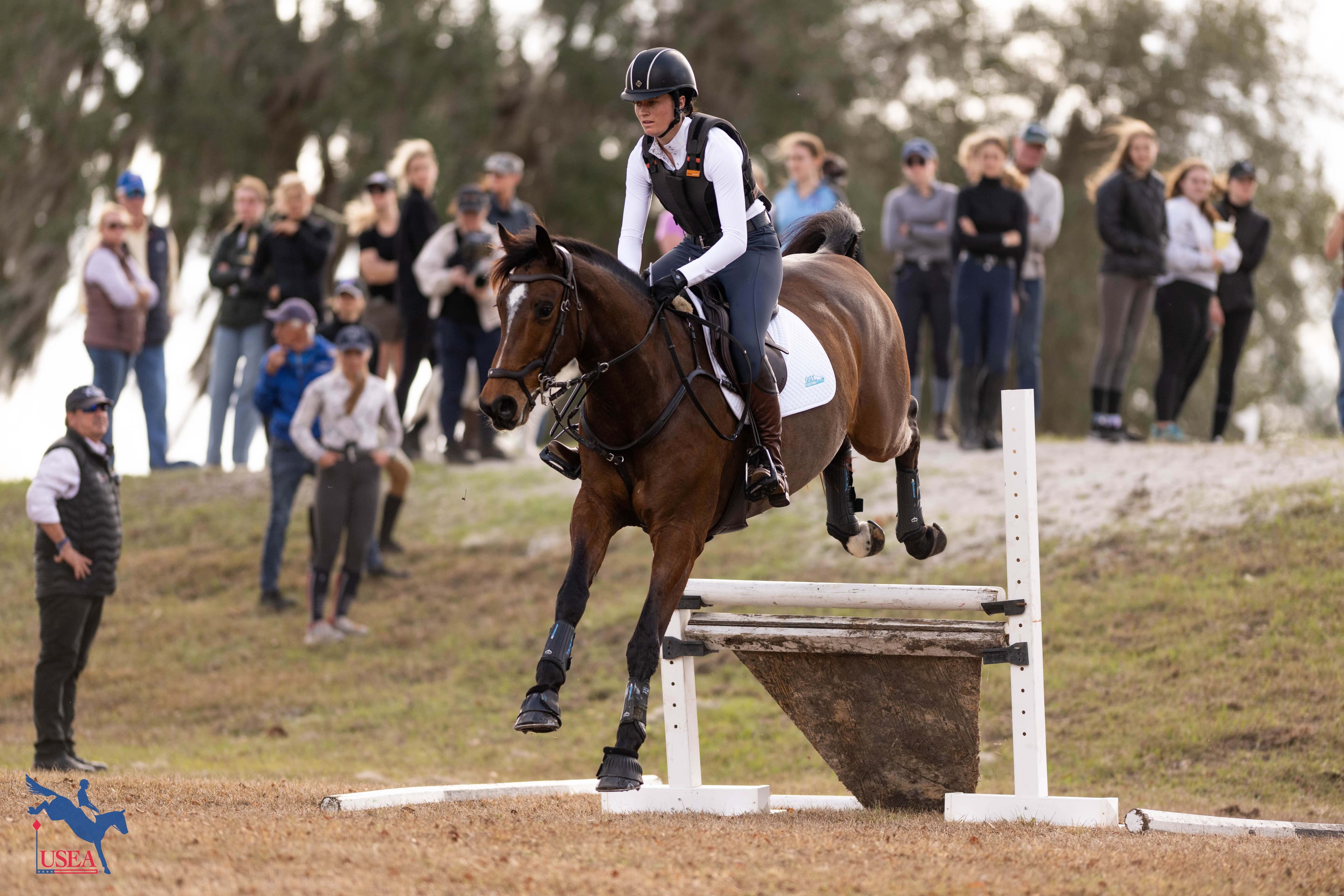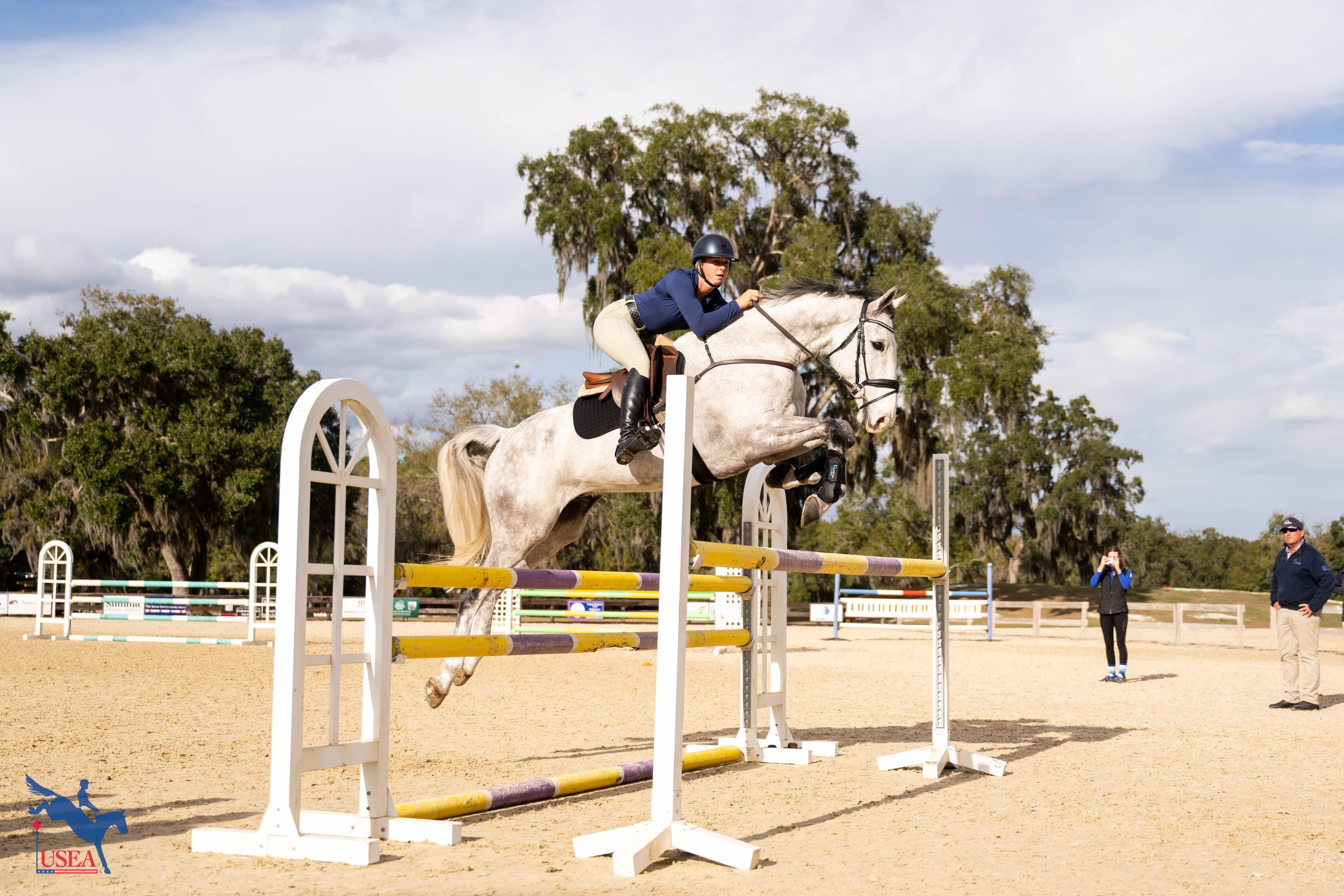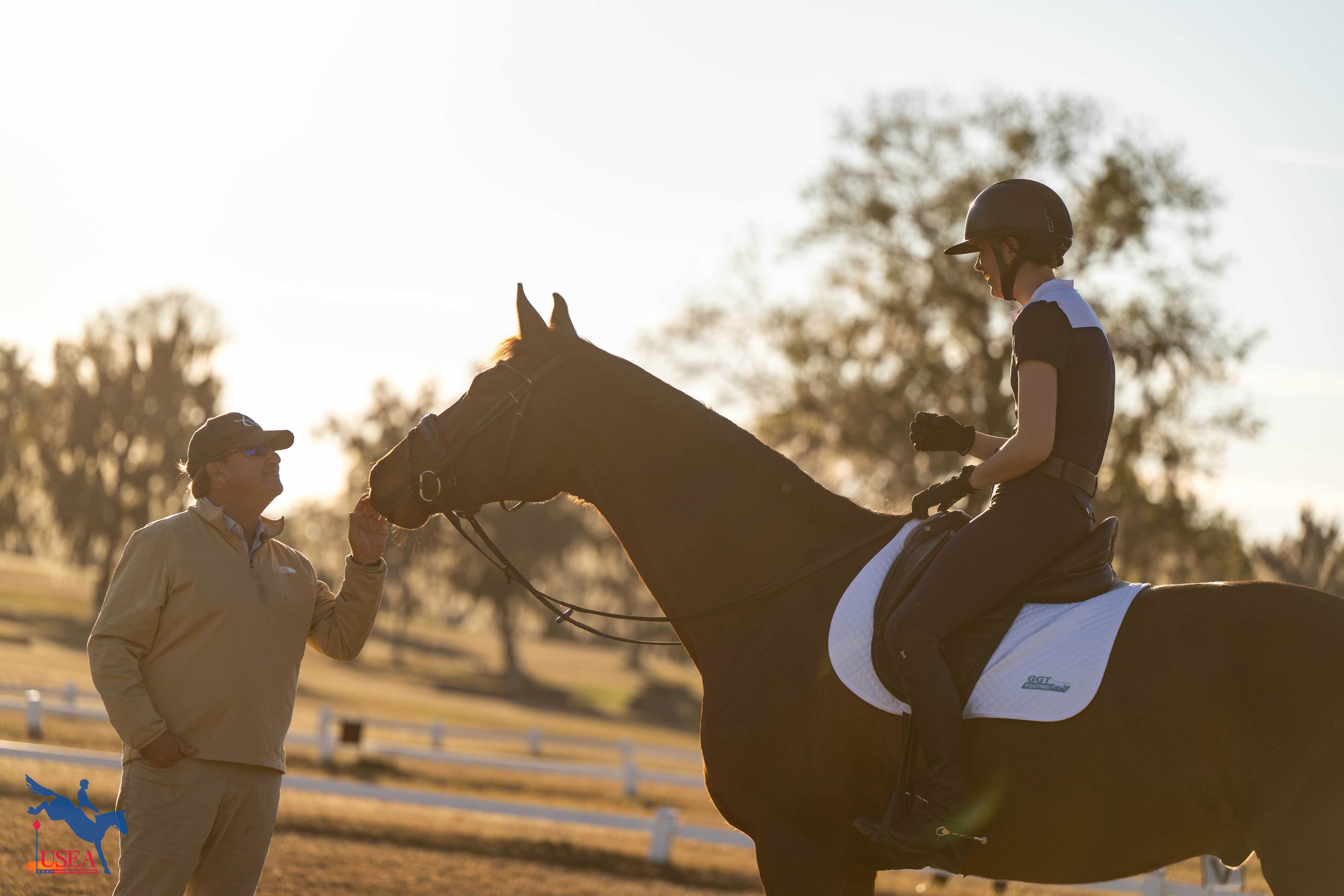The Relationship Between Conformation and Lameness, Part Two
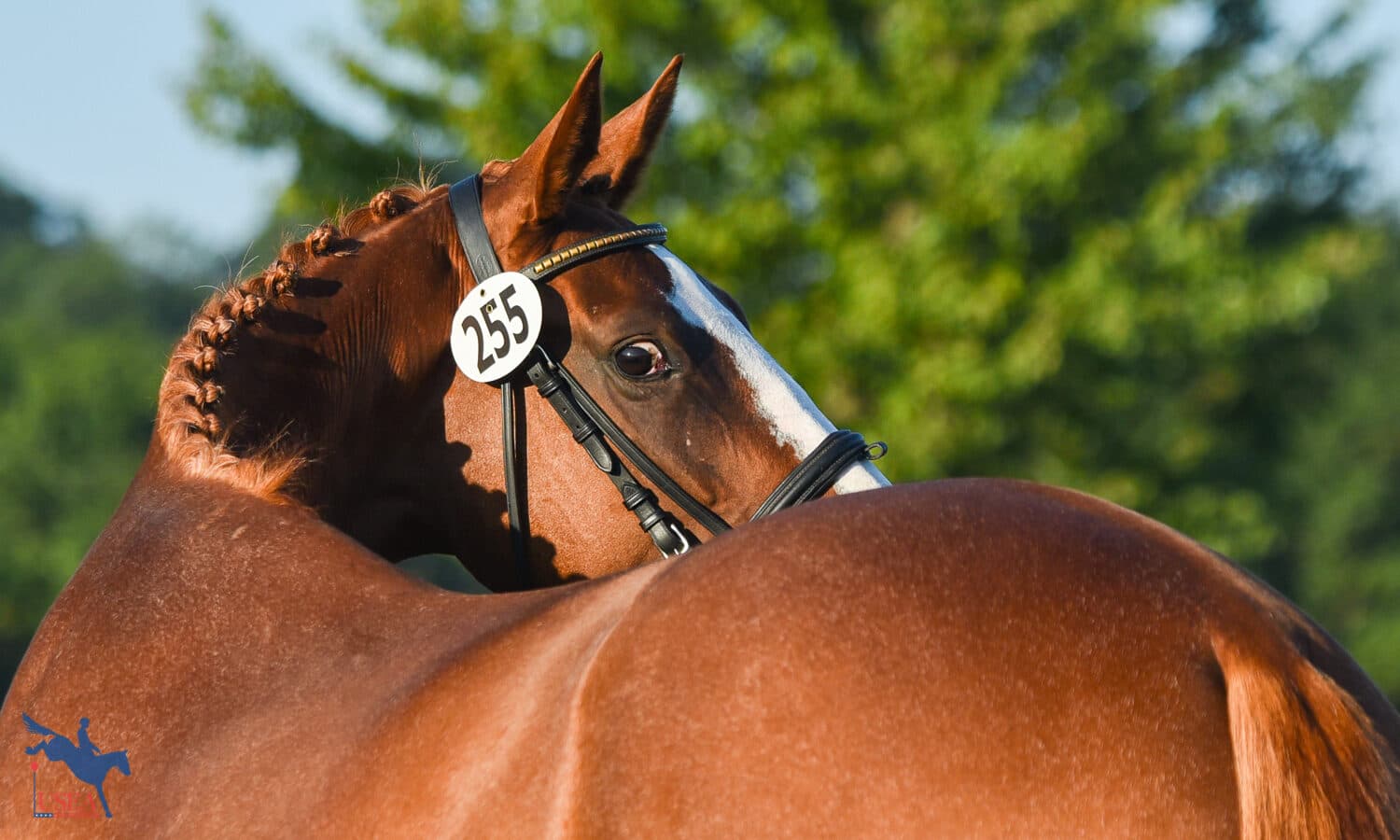
Dr. M Norris Adams, Clinical Assistant Professor in Equine Lameness and Surgery at Virginia Tech's Marion duPont Scott Equine Medical Center (EMC) in Leesburg, Virginia, gave a presentation on ideal conformation and different conformational defects to watch out for. To read part one, which reviews the conformation of the front legs, click here.
“There are fewer conditions to look out for in the hind limb, but there are some that are very important,” Dr. Adams shared in his discussion of the relationship between conformation in soundness that took place at Virginia Tech's Marion duPont Scott Equine Medical Center (EMC) in Leesburg, Virginia. “If you draw a line from the bump created by the back of the pelvis next to the tail, that should drop down right to the point of the hock straight down the cannon bone to the fetlock. That leg will really be a solid support under the weight of the animal. From behind they should be fairly straight down – some horses will toe-out just mildly, and we consider that pretty normal.”
“One of the most important things that I look at are the hind fetlocks. When the hind fetlock starts to get a little saggy or starts to drop, when they’re walking you can see that they really sink,” Adams continued. “Instead of having this nice upright conformation, they start sinking. This is often combined with a straight hock, which places severe stresses on the suspensory ligament at all times, making them exceedingly prone to injury of this structure.”
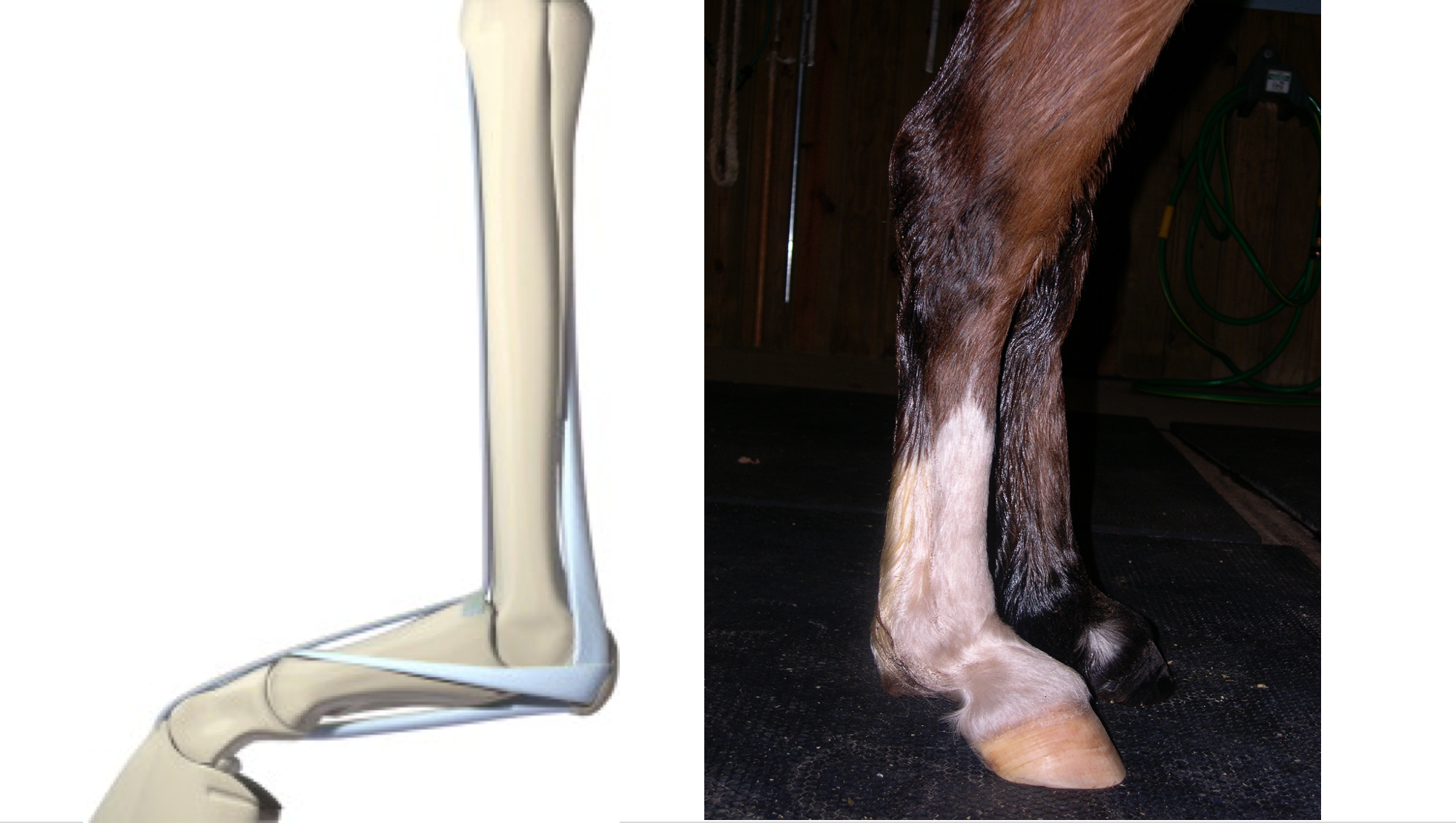
Horses who are bowlegged behind will twist their feet as they walk, causing unnatural strain on the ligaments and joints. “The inside of the hock is going to take tremendous concussive stress and it will be prone to arthritis while the outside of the leg will be strained through the collateral ligaments.”
Baby Got Back
The ideal horse will split into equal thirds when viewed from the side: the shoulder, the back, and the hindquarters. “Not only are we looking for these proportions, we’re also going to look at the shape of the back,” Adams said. “Is it straight? Does it have a hunch? Is it a sway back? It’s important to consider both the length and the shape.”
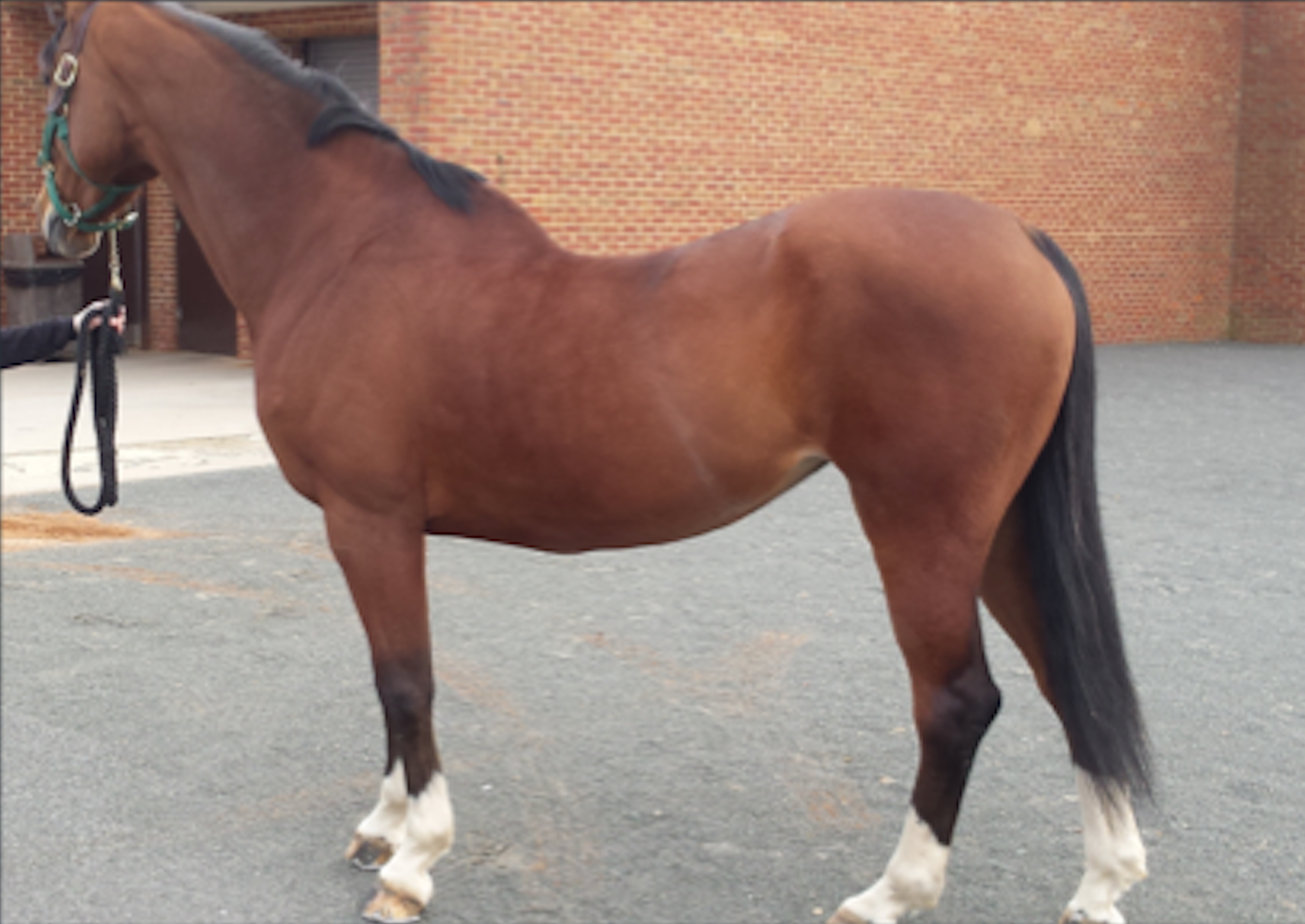
“The vertebral column is down low in the neck and then comes up along the spine – it’s not even close to where your saddle is, the spinous processes are several inches long,” Adams described. “The spinous processes are very important – they should have nice spaces in between them and they shouldn’t have any crowding.” Long-backed horses don’t typically run into this issue, but shorter-backed horses sometimes do, and that’s when horses develop kissing spine. Long-backed horses will instead be prone to soreness of the musculature that stretches along the spine and the sacroiliac joint, where the spine meets the pelvis.
The hunter’s bump manifests as a bump on the top of the hindquarters on one side of the spine and is caused by the tuber sacrale being uneven. Typically this asymmetry is a result of one of the tuber sacrale being elevated. The point where the pelvis attaches to the sacrum – the sacroiliac joint – is the only place where the hind legs are attached to the backbone. So, when one of those joints gets stressed or strain, it can move the whole pelvis out of alignment. “This may or may not be a source of lameness,” Adams stated. “If there’s an asymmetry, it tells you that one side is taking more strain than the other, whether they’re sore or not.”
A Solid Foundation
Last but not least, Adams turned his attention to the hooves to review some of the different conformational defects of the feet. “Feet are key – you’ve heard the phrase, ‘No foot, no horse’ – it really is important to always start off looking at the feet. We spend a lot of time looking at the foot from the side, talking about the hoof-pastern axis.”
The hoof-pastern axis refers to the area where the hoof meets the pastern and where you want to see the angles match up seamlessly. “The hoof and the pastern should be in one straight line,” Adams confirmed. “The deep flexor tendon comes down the back of the pastern and attaches on the coffin bone. It rubs on the back of the flexor surface of the navicular bone, which exists to act as a fulcrum for the tendon to wrap around before it inserts.”
“If you have a horse with a low heel, it is going to add tension to the deep flexor tendon,” Adams continued. “We call that a broken backward axis. If you have a horse with a really high heel, it creates slack in the tendon and the pastern will drop down, putting pressure on the suspensory – that’s a broken forward axis. It’s backward to what you’d think.”
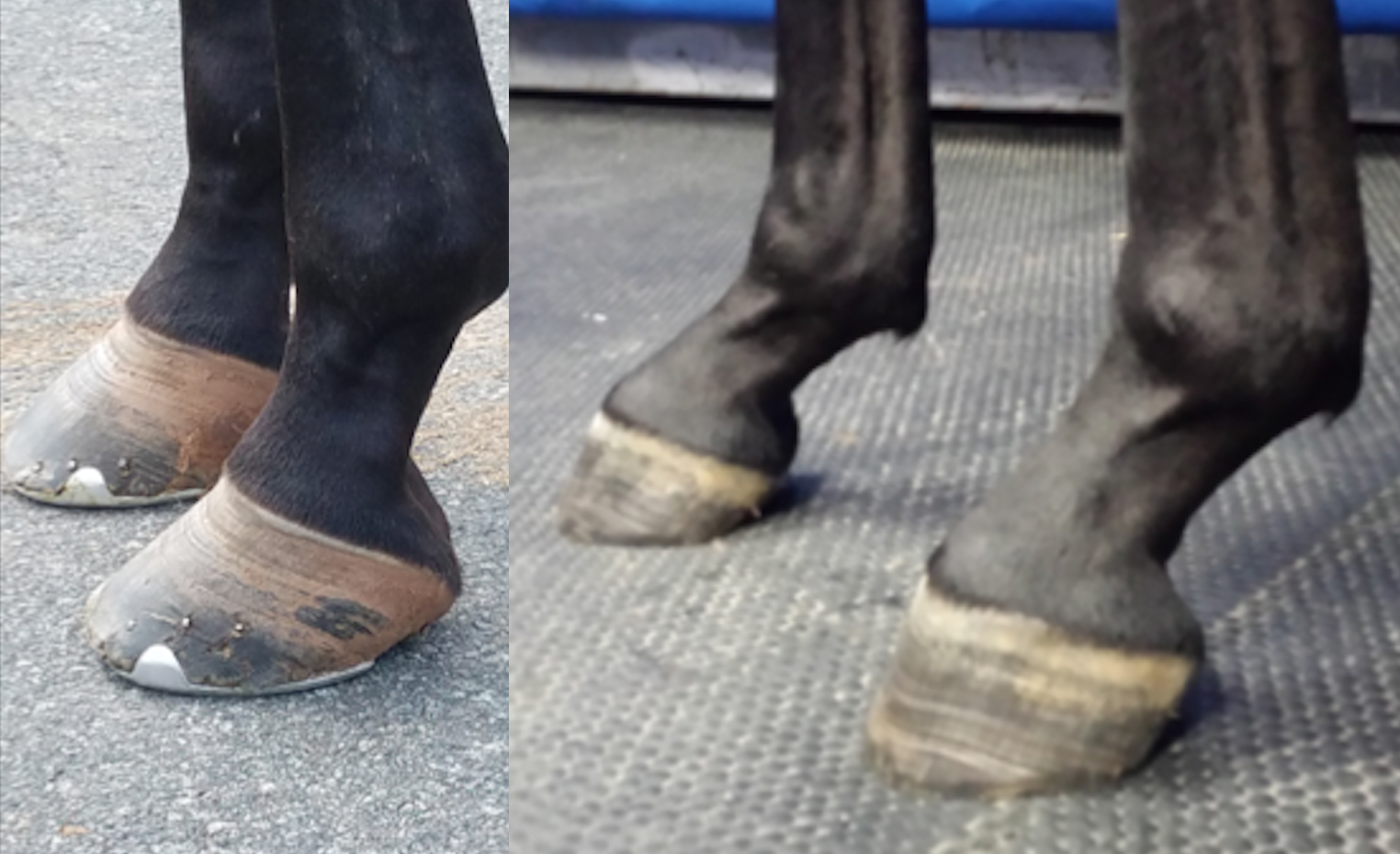
All of the conformational defects in the front leg can have an effect on the conformation of the feet. For example, a horse who stands wide at the base will have issues in the hoof, coffin joint, and even the pastern. “The hooves will curve because he’s putting a lot more stress on the inside and stretching the outside.”
Club feet occur when the angle of the hoof is greater than 60 degrees (with 45 degrees being the ideal). “You either trim it and accept that it’s going to be more upright or you have to cut something like a check ligament to add more length to the tendon. If you leave a horse with a club foot, he might not necessarily be lame, but there’s a mechanical disparity. One foot will have a long stride while the other has a short stride.”
A visible imbalance of the coronet band is indicative of an imbalance in the conformation. “If you look at the coffin joint [on x-ray], you will see the space is uneven from side to side. One side is being stretched and one side is being compressed. This is going to make the horse vulnerable to injury of the collateral ligament.”
The bottom line is that, while all these different conformational defects are something to be aware of – and if they’re severe enough they can have a significant effect on a horse’s ability to perform – minor conformation imperfections are not necessarily indicative of horse that will be unable to do his job. As Dr. Adams concluded, “You don’t have to be the ideal horse to do your job well.”
About Dr. Norris Adams
After receiving his DVM from Mississippi State University in 1992, Dr. Adams completed an internship at the Alamo Pintado Equine Medical Center in Los Olivos, California. He then entered private equine practice and spent a year in Saratoga Springs, New York, and a year in western Pennsylvania before completing a residency in large animal surgery at the University of Minnesota in 1998. He achieved Diplomate status through the American College of Veterinary Surgeons in 1999. Dr. Adams then worked in a horse show practice in Fairfield, Connecticut for one year before serving a two-year stint as a clinical instructor in large animal surgery at the Virginia-Maryland College of Veterinary Medicine in Blacksburg, Virginia, In 2001, Norris moved to Middleburg, Virginia, and was an associate veterinarian and surgeon at The Middleburg Equine Clinic for five years. Immediately prior to joining EMC as a clinical assistant professor in equine lameness and surgery, Dr. Adams worked as an associate veterinarian and surgeon at the Piedmont Equine Practice in The Plains, Virginia, from 2006 to January 2008. He achieved Diplomate status in the American College of Veterinary Sports Medicine and Rehabilitation in 2017. Dr. Adams' expertise includes lameness, imaging, and orthopedics.

